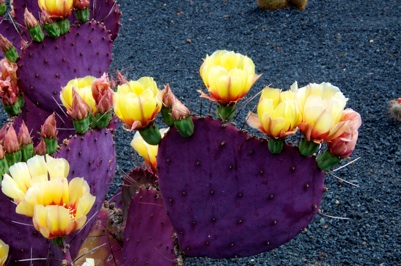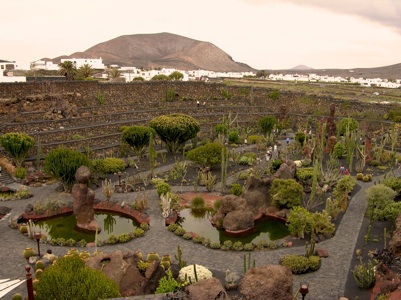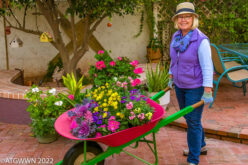Jardin de Cactus, Lanzarote, Spain
Cactus, succulents and rock are familiar features in Southwest gardens. As a desert dweller, I assumed there were no more beautiful cactus gardens than exist here in the Sonoran desert. That idea was turned upside down on the other side of the Atlantic Ocean.
In Lanzarote, one of the Canary Islands of Spain there is a beautiful cactus garden. This garden is the creation of Cesar Manrique (1920-1992). Cesar, a Spanish citizen born on this island, was a painter, designer of wind toys, sculptor, ecologist, contemporary of Andy Warhol, and a gardener.



Every feature of the garden is visually beautiful. The entrance gate shaped as a saguaro and the window niches framing the view are works of art. You enter at the top of the garden and descend down one of two winding stone staircases to walk on pathways paved with smoothed sections of volcanic rock. The circular space is terraced into five levels. The plants are planted in pulverized black volcanic bits.

Cactus plantings are placed to weave you through the floor of the garden. Ponds provide reflective surfaces for the clouds overhead. Cactus and Euphorbias provide flower, texture and dimension. Manrique planned every aspect of the garden, such as uniform pots marching up a staircase with variation provided by the plant inside. The chandeliers used in the cafe and gift shop were his creations modeled on cactus forms. Even the doors of the toilets were uniquely designed with stones clearly designating the genders.
Described by the Manrique Foundation guide as full of creative energy and ideas for the future, CesarManrique died in a car accident in 1992 at the age of 73. This artists’ final work is a living masterpiece.



I have always wanted to visit Europe and after reading your article, it makes me want to go there even more. Amazing pictures, Amazing story…
Thank you Linda
Jason